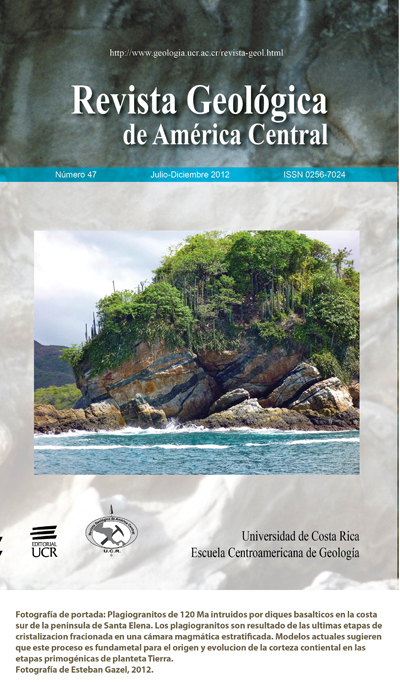Abstract
Route 27, known as Ciudad Colón-Caldera Highway, offers excellent geological sections showing muchof the volcanic and sub-volcanic stratigraphy of the western part of the Central Valley and the Aguacate Mountainsfoothills. Here a volcaniclastic succession correlated with the Grifo Alto Formation (Pliocene) is exposed. It consistsof lavas, breccias and epivolcanic deposits (hyperconcetrated fluvial and debris avalanches deposits) that locally showstrong propilitic alteration. In some places the succession is slightly to moderately tilted, faulted and cut by dykes. Aseries of old debris avalanche deposits is also present, related to the volcanic activity in the Aguacate Mountains. Lo-cally, a series of monomictic mesobreccias units is exposed consisting of glassy andesitic blocks in a vitro-crystallinematrix ash interpreted as block and ash-flow deposits, which is probably coeval with the volcanic Monteverde Forma-tion (Lower Pleistocene). At least, 4 units of debris flow/debris avalanche deposits are associated with Nuestro AmoFormation. At the upper part of the succession, several porphyrytic andesitic lava-flows, correlated to the Lower ColimaFormation are followed by ignimbrites of the Puente de Mulas and Tiribí Formations, of middle Pleistocene age, con-taining hyperconcentrated fluvial-ignimbrite deposits with decreasing thicknesses. A propagation fold deforms theseignimbrites, indicating the existence of a thin-skinned type overthrust with a SW vergency, which was active since, at least, the middle Pleistocene. The tilting of the rocks exposed along Route 27, the type of fracturing/faulting and fol-ding, and the existence of some structural highs, is well explained with the thrust faulting model proposed in this article.Comments
Downloads
Download data is not yet available.






